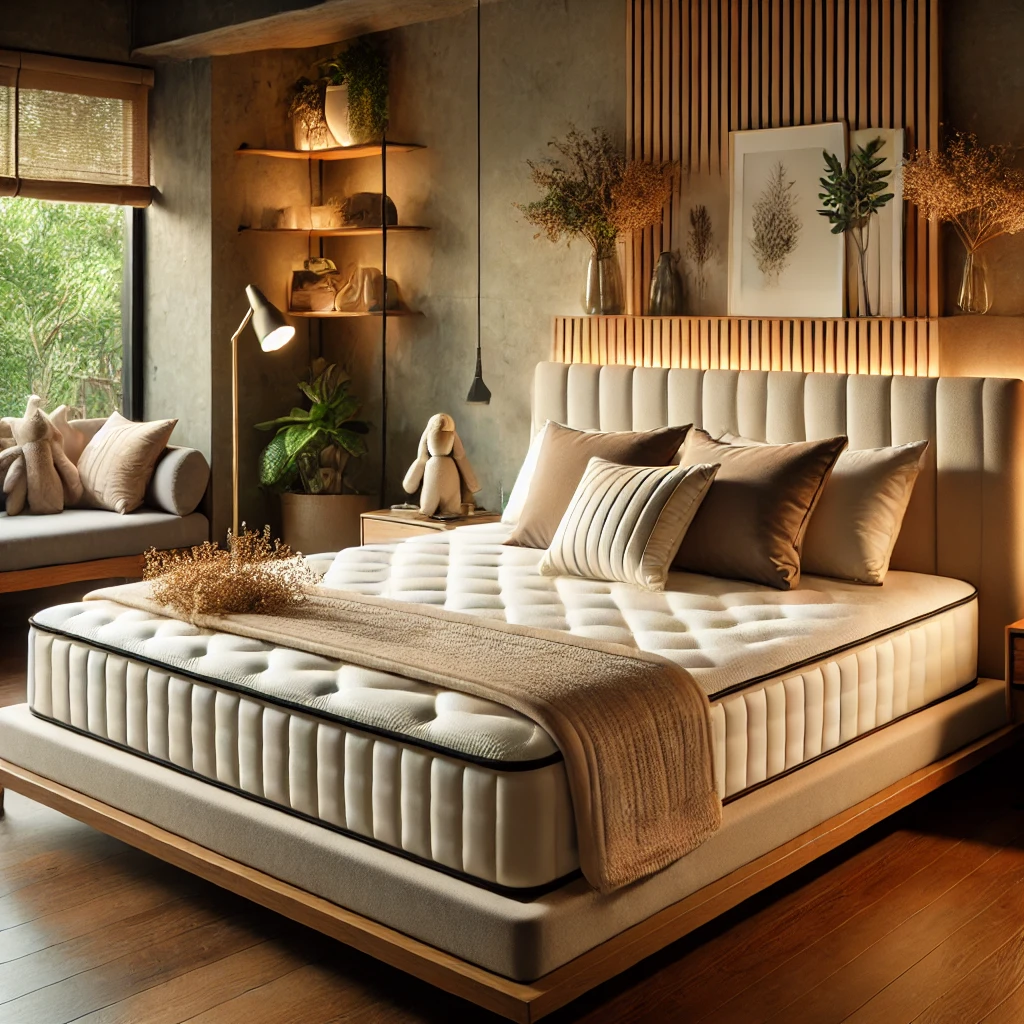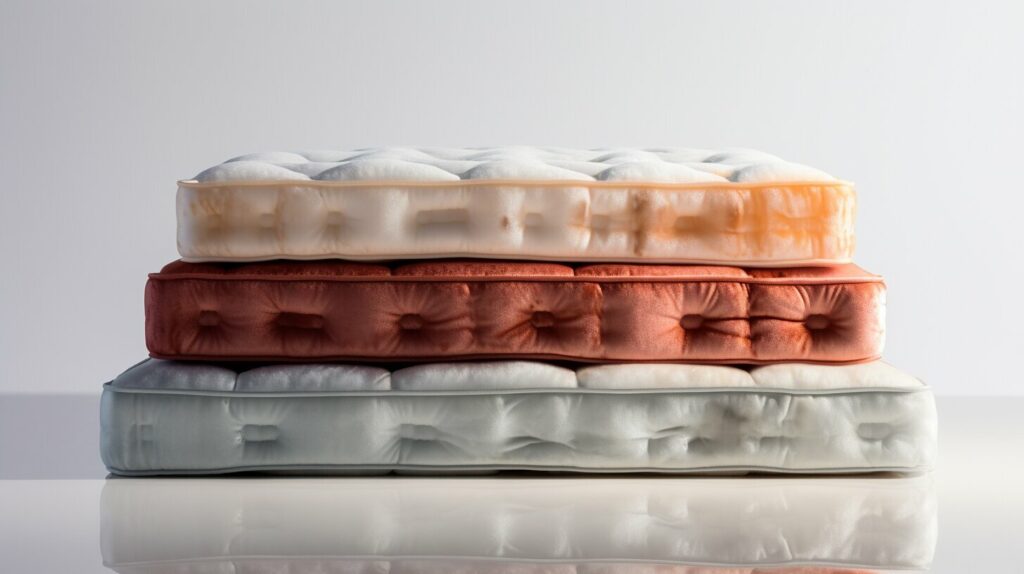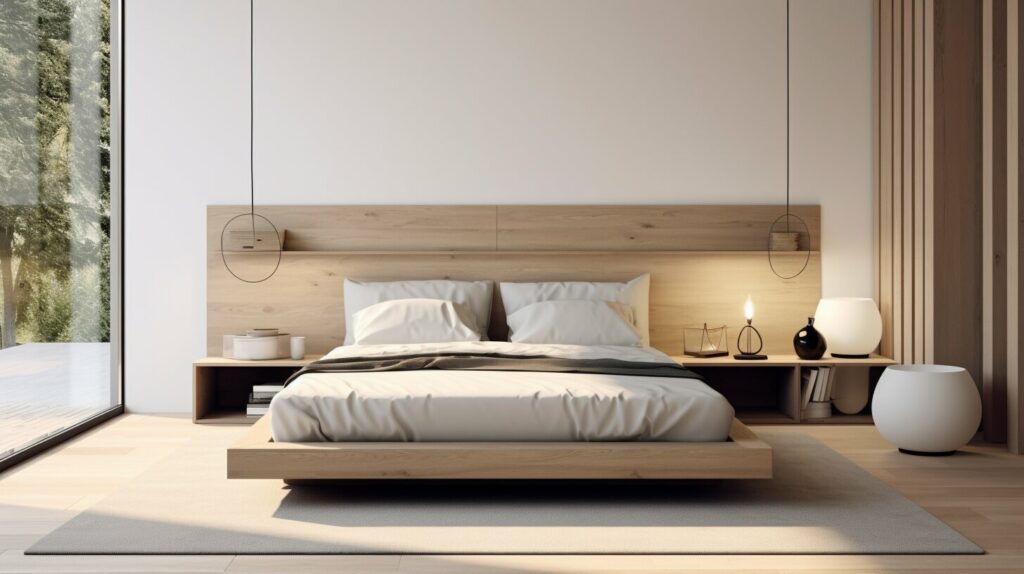Rustic Bed Design Ideas: Create a Cozy, Timeless Bedroom Retreat
Rustic bed design blends natural materials, artisan detail, and warm textures to build a cozy, timeless bedroom retreat. The look feels grounded and welcoming, with wood grain, hand-finished surfaces, and organic bedding that soften the room. Whether your style leans cabin-chic or modern rustic, the right frame and textiles make rustic bed design both beautiful and practical.
Key Takeaways: rustic bed design
- Rustic bed design centers on solid wood, metal accents, and hand-worked finishes for long-lasting style.
- Earthy palettes, eco-conscious sheets, and layered textures create warmth and calm.
- Mix reclaimed wood and wrought iron to add character while keeping a timeless feel.
- Plan the right size and height early to fit your room’s layout and storage needs.
What Makes Rustic Bed Design Unique?
Rustic furniture celebrates honest materials and visible craftsmanship. You see real wood grain, touchable texture, and details that feel human-made, not factory-perfect.
That’s why a rustic bed becomes the room’s anchor. Knots, tool marks, and matte finishes read as authentic rather than flawed. The effect pairs effortlessly with contemporary pieces and soft textiles.
For broader bedroom environment pointers that support the look and sleep quality, review the Sleep Foundation’s guidance on optimizing your space here.
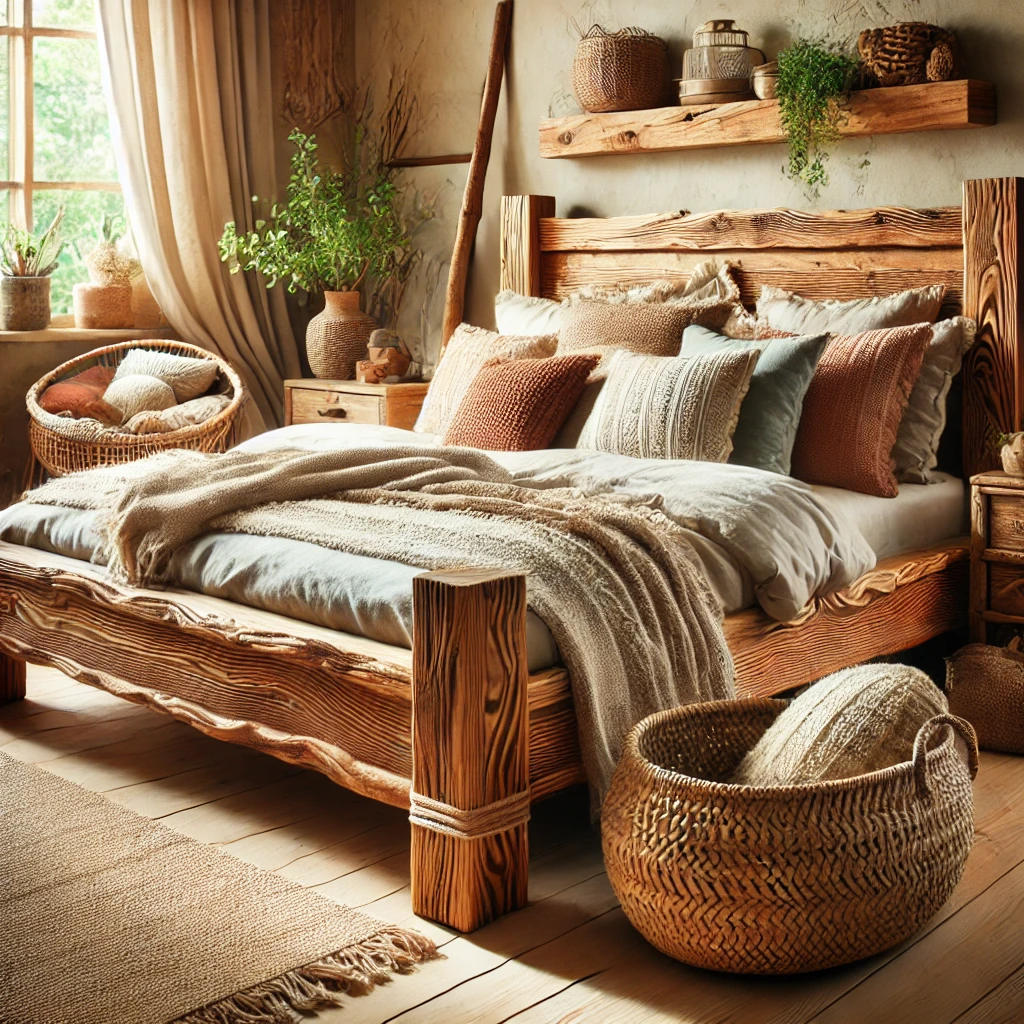
Core Features of Rustic Bed Design
Focus on three elements first: materials, craftsmanship, and color. Get those right, and the rest of the room falls into place.
- Natural Materials: Solid hardwoods like oak, pine, or maple offer strength and visible grain.
- Handcrafted Details: Distressing, dovetail joints, and artisanal hardware add character.
- Earthy Tones: Browns, warm beige, clay, and stone-inspired grays keep the palette grounded.
Choosing the correct frame size avoids cramped layouts. Use our Complete Guide to Bed Sizes and Mattress Sizes: Dimensions Guide to plan fit and clearance.
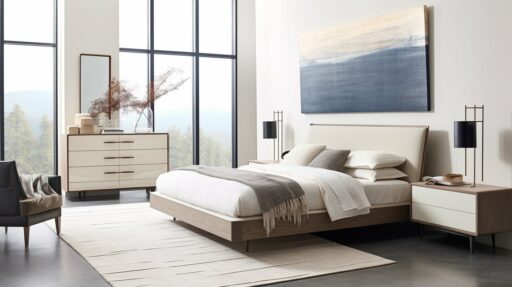
Benefits: Why Choose a Rustic Bed?
Rustic beds look better with age and invite relaxation. The tactile finishes, sturdy build, and calming palette make bedtime feel like retreat time.
- Timeless Appeal: Classic forms outlast fast trends.
- Natural Warmth: Real wood and organic bedding soften the space.
- Durability: Stout construction stands up to daily life.
For sleep-centric design tips that complement the look, see how to design a restful room via Sleep Foundation here.
Popular Materials for Rustic Bed Frames
Blend wood and metal for depth. Reclaimed planks tell a story, while iron details add structure and a hint of industrial edge.
- Reclaimed Wood: Sustainable choice with unique knots, nail holes, and color variation.
- Solid Wood: Reliable strength, rich grain, and easy refinish options.
- Metal Accents: Wrought iron, blackened steel, or antique brass hardware provide contrast.
Compare frame materials before you commit: Wood vs Metal Bed Frames. If sustainability is a priority, start with our Eco-Friendly Bed Frames Guide.
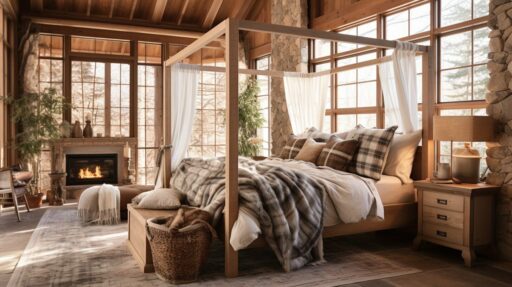
Styling Your Bedroom Around a Rustic Bed
Lead with texture, then layer color. Neutral foundations with a few earthy accents keep the look calm and cohesive.
- Textiles: Choose eco-conscious sheets, linen duvets, and chunky knit throws.
- Furniture: Simple case goods with matte, distressed, or oiled finishes pair best.
- Accents: Baskets, pottery, stone lamps, and wool rugs add tactile interest.
For inspiration boards and layout ideas, browse Better Homes & Gardens’ rustic bedrooms here. When temperatures swing, smart textiles help—see our overview of temperature-regulating bedding.
Eco-Friendly vs. Conventional Bedding (Practical Comparison)
Choose textiles that feel great and align with your values. Organic, responsibly made bedding supports comfort and sustainability.
- Fiber Source: Organic cotton and linen avoid harmful chemicals; conventional options may not.
- Certifications: Look for GOTS or OEKO-TEX labels on sheets and duvets.
- Feel & Longevity: Quality organic bedding often softens with wear and lasts longer.
For a buyer’s primer on organic sheets and certifications, see Parachute Home’s guide here.
Environmental Impact: Wood, Finishes, and Longevity
Rustic pieces can be a low-waste choice when you select durable materials and timeless styles. Long-lasting furniture reduces replacement cycles.
- Material Footprint: Reclaimed or sustainably sourced wood lowers demand for new lumber.
- Finish Choices: Natural oil or low-VOC finishes minimize indoor emissions.
- Care & Repair: Re-oil, tighten hardware, and spot-sand to extend service life.
If you want wood with eco-credentials and classic looks, explore Wooden Bed Designs and Eco-Friendly Bed Frames.
Buyer’s Guide: How to Choose the Right Rustic Frame
Start with function, then confirm proportion and finish. A well-chosen piece fits your room and your routine.
- Measure Twice: Confirm mattress size, frame footprint, and walkway clearance. Use our bed size guide.
- Decide on Storage: Opt for drawers or underbed space if the room is small.
- Pick the Finish: Oil, wax, or low-sheen varnish preserves grain and reduces glare.
- Check Support: Slats, center rails, and hardware should feel substantial.
Trusted Textiles and Certifications
Look for third-party labels that verify safety and sustainability. Certifications make shopping simpler and more transparent.
- GOTS: Signals organic fiber integrity across the supply chain.
- OEKO-TEX: Screens finished textiles for harmful substances.
Explore organic bedding styling and certification tips via Parachute’s editorial resources here.
DIY Rustic Bed Projects
Keep projects simple and structural. A reclaimed plank headboard or bolt-on metal legs can shift a room’s whole vibe.
- Build a headboard from barn boards; sand lightly and seal with natural oil.
- Add pipe brackets or strap iron for rustic-industrial definition.
- Age new wood with wire brushing, then finish with a matte wax.
Maintenance: Keep Your Rustic Furniture Beautiful
Routine care protects the finish and keeps joints tight. A few small habits extend the life of your investment.
- Dust with a soft cloth; avoid abrasive pads and harsh cleaners.
- Re-oil or wax seasonally to prevent drying and hairline cracks.
- Shield from strong sun and swings in humidity.
General bedroom upkeep that supports sleep and longevity is outlined by Sleep Foundation here.
FAQ
- What is the best wood for a rustic bed design?
- Oak, pine, and maple are popular for strength, repairability, and visible grain that suits rustic finishes.
- Can rustic bed designs work in modern homes?
- Yes. Clean lines, neutral textiles, and pared-back decor let rustic frames coexist with modern pieces.
- Are rustic beds eco-friendly?
- They can be. Choose reclaimed or responsibly sourced wood and low-VOC finishes for a lower footprint.
- How do I style a rustic bed frame?
- Use organic bedding, earthy color layers, and a few natural accents like wool, clay, and rattan.
Final Thoughts
Rustic bed design blends nature, craftsmanship, and comfort into a look that ages gracefully. If you’re choosing materials, sizes, or finishes, explore these Cozy Bed Quarters resources for next steps: bed sizes, wooden bed designs, and eco-friendly frames.
Related Reading
From Cozy Bed Quarters
Expert Resources
- Sleep Foundation: Bedroom Environment
- Better Homes & Gardens: Rustic Bedroom Ideas
- Parachute Home: Organic Bedding Guide

